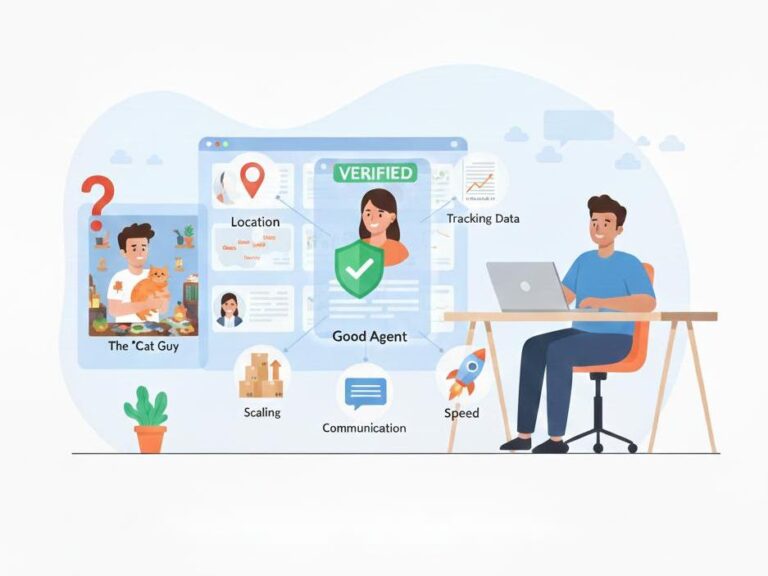Launch your dropshipping journey today – Your first sale is closer than you think!
- Home /
- Blog /
- Dropshipping /
- 25 Key U.S. E-commerce Statistics In 2025
25 Key U.S. E-commerce Statistics In 2025
-
Charlie Shen
- Last updated: November 5, 2025
Copy Link
Facebook
X
WhatsApp
LinkedIn
Email

2025 marks another turning point for the US e-commerce market. After a surge in online shopping during the pandemic followed by a decline, e-commerce sales now officially account for over 16% of total retail sales. From multi-billion dollar B2C networks to wildly successful TikTok stores, the digital market is growing at an unprecedented pace. New technologies, evolving consumer expectations, and global competition are redefining how Americans “shop”.
In order to show how retail, B2B, dropshipping, and mobile commerce will affect the US economy in 2025, this article summarizes key statistics from this trend. In order to help dropshippers, marketers, and business owners identify impending big possibilities, each part contains reliable statistics and concise analysis. Let we begin.
I. Macro Market Scale and Growth Velocity
1. The seasonally adjusted estimate of U.S. retail e-commerce sales for Q2 2025 reached $304.209 billion, maintaining the strong momentum established in late 2024. (Source: U.S. Census Bureau) Learn more.
This steady quarterly volume highlights e-commerce’s ongoing resilience, even amid broader retail fluctuations.
2. E-commerce accounted for 16.3% of all U.S. retail sales in Q2 2025 (SA). Compared with a 5.3% year-over-year growth in e-commerce versus only 3.8% in total retail sales, online channels remain the primary driver of overall market growth. (Source: U.S. Census Bureau)
The widening gap between e-commerce and overall retail growth shows how digital sales continue to outpace physical retail recovery.
U.S. E-commerce Retail Sales & Percentage Share (2024 Q2 – 2025 Q2)
Data Source: The Census Bureau of the Department of Commerce | Units: Millions of U.S. Dollars
3. Globally, e-commerce is forecasted to account for 24% of total retail sales by 2025 and 21.8% by 2027, depending on the dataset used.
The U.S. penetration rate, still below global averages, implies that there’s room for substantial growth over the next five to seven years.
4. The U.S. B2B e-commerce market was valued at approximately $9.69 trillion in 2024, with a 6.73% CAGR from 2022–2024. It’s projected to grow at an annual rate of 2.77% through 2028. (Source: Capital One Shopping)
Despite its massive size, B2B e-commerce still shows steady expansion, reflecting ongoing digital transformation among enterprises.
II. Key Category Performance and Penetration
5. Apparel and Accessories remain the most frequently purchased items online, totaling $203.75 billion, while high-value categories such as Computers and Consumer Electronics dominate total revenues at $219.33 billion (21.2%) of the U.S. market.
Fashion drives online frequency, but electronics remain the backbone of e-commerce revenue.
6. Toys and Hobby products show the highest online penetration at 42.4% of total category sales.
This reflects strong consumer comfort in buying standardized, low-return-risk items online.
7. Health, personal care, and beauty products have relatively low online penetration at 17.2%, suggesting untapped potential.
As online trust and logistics improve, these high-frequency consumables are poised for rapid digital growth.
III. Dropshipping Sector Expansion
8. The North American dropshipping market is valued at $109.2 billion in 2025, projected to grow at a 20.86% CAGR from 2025–2030. (Source: Mordor Intelligence)
Dropshipping remains one of the fastest-growing models, offering scalability without heavy inventory investment.
9. Around 27% of businesses use dropshipping as their main fulfillment model, contributing to 23% of all online sales.
The model’s accessibility makes it especially appealing for small businesses and digital entrepreneurs.
10. Dropshipping thrives in high-volume, low-inventory-risk categories like Toys & Hobby, Furniture & Appliances, Food & Personal Care, Electronics, and Fashion. (Source: Maximize Market Research)
These sectors show how standardization and consumer trust accelerate the dropshipping ecosystem.
IV. Platform Ecosystem and Mobile Commerce
11. Amazon leads with a 37.6% share of U.S. retail e-commerce, supported by 40,000 trucks, 110 aircraft, and over 16 million daily orders. Shopify follows, holding 29% of the U.S. e-commerce software market and powering 3 million stores. (Sources: AMZPrep)
Amazon dominates fulfillment, while Shopify empowers independence — two complementary forces shaping the U.S. e-commerce ecosystem.
12. U.S. mobile e-commerce is expected to reach $710 billion in 2025. Mobile conversions average 3%, slightly behind desktop (3.35%), but mobile apps outperform mobile sites by 130% in conversion rate.
Mobile apps are proving essential for boosting engagement and checkout performance.
13. Credit/debit cards made up 54% of transactions in 2024, while “Buy Now, Pay Later” (BNPL) methods are projected to grow at an 18.3% CAGR from 2025–2030. (Source: Mordor Intelligence)
BNPL continues to reshape affordability perceptions and checkout flexibility for younger consumers.
V. Consumer Behavior
14. Approximately 33% of consumers report having higher expectations for fast shipping, and 42% of shoppers expect a 2-day shipping option to be available. (Source: AppScenic)
Consumer expectations regarding delivery speed and cost have become operational imperatives.
15. Global Average Order Value (AOV) data shows desktops at $146.05 vs. mobile at $97.72. In March 2025, the average U.S. e-commerce order value was $159.05.
Higher AOV on desktop suggests mobile UX still lags in upselling efficiency.
16. Data show that 31.9% of online shoppers in the U.S. have completed a purchase from an international retailer.
The U.S. consumer base is highly engaged in international purchasing. This willingness to engage in cross-border shopping enhances the addressable market size for dropshipping operations sourced globally.
17. U.S. merchants account for nearly 50% of cross-border e-commerce purchases in critical markets such as Canada and Mexico.
American digital retailers remain highly competitive on the global stage.
18. The global average cart abandonment rate is around 70.19%, with top reasons being high extra costs (39%), slow shipping (21%), account creation requirements (19%), and long checkout (18%). The average checkout flow includes 5.2 steps.
Streamlining checkout and pricing transparency directly translate to higher conversions.
19. The 2025 average U.S. e-commerce return rate stands at 20%, up from 8.1% pre-pandemic.
Apparel and Accessories have the highest return rate at an average of 25%, followed by Auto Parts (19.4%) and Footwear (17%). Beauty and Personal Care products boast the lowest return rate at just 4.3%, while Home Goods stand at 8%.
The primary behavioral driver of high return rates is “bracketing” — shoppers ordering multiple sizes or styles to try on, then returning the ill-fitting or unsuitable ones.
Returns are an unavoidable cost — particularly in apparel — but represent opportunities for sizing innovation and virtual try-ons.
20. Millennials lead with 85% having shopped online in the past year, and 44% doing so weekly or daily. Gen Z follows, with 73% shopping online and 56% using mobile payments monthly. (Source: Capital One Shopping)
Younger cohorts are setting the pace for mobile and social commerce adoption.
VI. Economic, Logistical, and Societal Impacts
21. Job Market Shifts: Fulfillment center jobs pay 31% more than traditional retail positions.
E-commerce contributes to better wages, though often with more demanding working conditions.
22. E-commerce growth is estimated to reduce brick-and-mortar spending by 3.7%, and physical store counts by 2.1%. (Source: Stanford SIEPR)
Physical retail continues to contract, especially in discretionary product categories.
23. U.S. e-commerce logistics were valued at $150.86 billion in 2025, with transport accounting for 66% of 2024 expenditures. Fulfillment typically consumes 5–15% of sales revenue, and total logistics costs now account for 12–20%, projected to rise to 15–25% due to last-mile inflation.
Rising logistics costs are squeezing margins, driving automation and regional warehousing investments.
24. Total U.S. logistics costs are projected to be approximately $2.6 trillion in 2024, a surge of nearly $1 trillion in five years.
This sharp rise reflects the growing complexity and demand in U.S. eCommerce fulfillment — driven by faster delivery expectations, increased parcel volume, and higher transportation and labor costs.
25. Cold-chain investments driven by online grocery and meal subscriptions are accelerating, with parcel demand in Food and Beverage growing at 6.9% CAGR.
Cold-chain innovation is becoming a key enabler of perishable e-commerce growth.
Final Thoughts
The US e-commerce market in 2025 will maintain strong growth momentum compared to 2024. Digital transformation in retail and B2B, the rise of AI big data models, the rapid adoption of mobile devices, the rise of drop shipping models, and the continuous expansion of cross-border trade are all reshaping how Americans shop and buy, making online shopping an increasingly ingrained lifestyle.
Despite rising logistics costs and high return rates, continuous innovation and maturation in logistics technology, payment systems, and customer experience are driving the entire e-commerce industry. For retailers, marketers, drop shipping providers, and entrepreneurs, the opportunities in e-commerce remain enormous—driven by agility, data-driven insights, and the ability to meet consumer shopping needs anytime, anywhere.
Shiptothemoon now has a complete dropshipping support system to help you quickly and efficiently enter the US e-commerce market and seize opportunities ranging from $0 to $10K/month. Contact us!
Table of Contents



